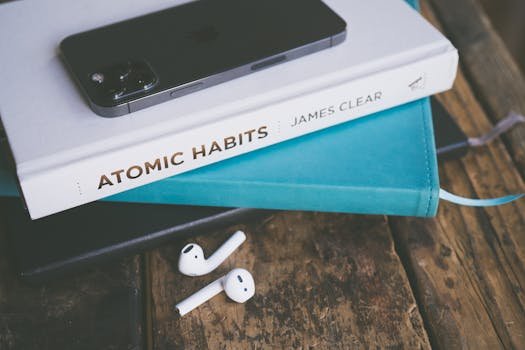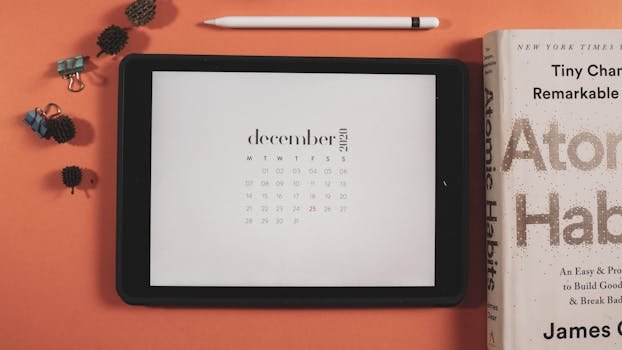James Clear’s Atomic Habits has risen to become a modern classic in the self-help and productivity pantheon. Its essential teaching—that small, consistent changes compound to produce remarkable results—has approximated a pop-cultural touchstone in recent years, one that has influenced millions of people around the world. But how well do these ideas translate into the real, messy life of everyday existence? Drawing on the scientific research underpinning his principles and the real-life applications of those principles that I have tried myself, let me lay out for you (with no attempt at being brief) what has worked, what hasn’t worked, and why.
Atomic Habits vs Real Life: The Promise of Atomic Habits

The gist of Atomic Habits is about disaggregating substantial objectives into minute, manageable actions that elicit propitious feedback loops. It is largely the product of the author’s thoughts and insights on the science of behavior and human psychology after studying them for over a decade. The author has also done a fair amount of reading on these topics and has written a sum of parts book on them. The book is a sum of parts. There is also a fair number of stories and examples from the author’s life and life of others that go into making a point.
The foundational concepts of the book are well-supported by research. For instance, a recent study by Akash (2025) underscores the authors’ contentions about the importance of even very small behavioral changes in the process of habit formation. . . . Clear’s method is also in very good standing with contemporary psychology. It is consistent with (a) the widely accepted model of how habits work, which sees them as consisting of a cue, a routine, and a reward; and (b) self-determination theory, which specifies the conditions under which people are optimally motivated to do something and are likely to keep doing it.
What Actually Worked for Me
1. Begin on a Small Scale, Yet Be Precise
In everyday life, trying to change habits all at once often results in failure. Instead, commencing with exceedingly small and distinctly outlined behaviors — such as accomplishing one push-up a day as opposed to completing a full workout — made the initiation of new habits less scary and more feasible. This strategy of “tiny habits” corresponds to what is known in the neurosciences about neuroplasticity and learning (Stark et al., 2023).
2. The Design of the Environment is Important
Making good habits unmistakable and convenient required intentional design of my environment. An example can illustrate what this looks like in practice. In my home, I have a table in the kitchen that’s always visible as I walk into the house. It’s the first flat surface I encounter after the front door. Before dinnertime, when I was working on this project, I would have to walk past that table. It’s a good thing, then, that this is also where I positioned my journal, which I had previously stashed behind my desk in a drawer. I was not in the habit of regularly walking past the journal in the kitchen. And there’s more. The whole setup makes it look like I’m in the kind of space where people write in journals, which is also a kind of external cue.
3. Maintaining Momentum Thanks to Monitoring and Accountability
My relentless forward motion toward my goals this past year can be attributed in no small part to monitoring and even a bit of public accountability.
Primarily, I am responsible for monitoring my own progress. The most helpful tools in this regard are my habit tracker and my daily checklist (more on that later).
But I have also enjoyed a bit of public accountability. The simplest thing you can do, really, is to tell friends when you have a goal and when you are working on it.
4. Flexibility Over Perfection Real life introduced unpredictability
Ambient conditions, human frailties, or the chemical reaction in us that makes stress a sometimes inevitable part of any life. This unpredictability can and does disrupt routines, whether travel is taken, an unexpected illness bedrags us, or plain life necessities work against us. Rather than giving up, we learn to reset quickly, applying a growth mindset that forgives lapses. (We also work on better anticipating these routine-busting stressors so we can take them in stride when they do occur.) We recommit to small daily actions, both in the context of each day and with a fresh perspective on a week or even a month of such actions. This adaptive approach reflects the behavioral ecology framework—being resilient to what life throws our way and kind to ourselves when we stumble.
Challenges I Encountered

- Motivation fluctuation: There were days when intrinsic motivation was low. On those days, I worked harder to make my habits feel more connected to what I truly value or see as my larger life goals. That, in turn, made my habits feel more meaningful, which made me want to do them more. And there’s evidence to suggest that this is an effective hack. Motivation theories proposed by psychologists like B. J. Fogg and Frank Rai say that when you align new habits with core values, the new habits are more likely to stick.
- Overly Complicated Systems: Initially, I attempted to monitor an excessive number of habits, which turned out to be too much to handle. I simplified things down to a small number of impactful habits (a half dozen at most), and I found that this allowed me to actually pay attention to what I was doing. I was more successful with the few habits I was tracking when I wasn’t trying to keep up with so many. According to Clear, it’s best to keep things simple and focus on a handful of habits.
- Interfering with Existing Habits: Some of the new habits I tried to adopt were at odds with my well-established routines. I resorted to habit stacking—linking new habits to old ones—to make my transitions a little smoother, a method neuroscience has taught us is a good way to “chain” habits together (Mehring, 2022).
Adaptations Beyond the Book

Leveraging apps for reminders and habit tracking allowed for real-time feedback and motivational nudges that made habit maintenance more engaging.
- Support from Within One’s Circle: Frequent contact with partners in responsibility generated a kind of pleasant peer pressure as well as boosting morale. Forming a habit in a group context, rather than in solitude, is often the psychologically easier path. (Hekmati, 2025)
- Mindfulness Practices: Incorporating mindfulness into my life allowed me to become more aware of the triggers for my bad habits. Knowing what set my automatic, mindless behaviors in motion let me work on changing those triggers—making them more harmless or even healthful.
Lessons Learned
- Consistency Beats Intensity: Even minimal daily progress builds up, but the key is to appear regularly instead of to push hard now and then.
- It is important to personalize: Crafting habit strategies that suit your lifestyle, character, and context seems to make them more effective.
- Be Patient and Kind to Yourself: Change is never a straight line; it is perfectly normal to have setbacks. They are part of the process and do not mean you’ve failed. They mean you are human.
Conclusion
Atomic Habits offers a framework based on psychology and neuroscience, yet the real-world application of habit formation demands more than what the authors present. They enjoin readers to take small, deliberate steps toward self-improvement, and I found that those steps became most effective when I aligned them with my core values, when I was mindful (in the sense that I was fully present and aware of what I was doing), and when I had a system of accountability that ensured my committing to the path toward a desired future.
References
- Akash, M. S., & Chowdhury, S. (2025). Small changes, big impact: A mini review of habit formation and behavioral change principles. ResearchGate. https://www.researchgate.net/publication/391205475_Small_changes_big_impact_A_mini_review_of_habit_formation_and_behavioral_change_principles
- Chandratreya, A. P. (2025). The Habit-Driven Consumer: Behavioral Insights from Neuromarketing. ResearchGate. https://www.researchgate.net/publication/391190359_The_Habit-Driven_Consumer_Behavioral_Insights_from_Neuromarketing
- Hansen, A. R., & Aagaard, L. K. (2025). Uncovering energy flexibility of everyday rhythms and routines. Energy Efficiency. https://vbn.aau.dk/files/768126701/preprints202407.0537.v1.pdf
- Hekmati, I. (2025). Habit loop in addictive behaviors formation among adolescents: The mediating role of impulsivity. Current Psychology. https://link.springer.com/article/10.1007/s12144-025-07480-0
- Mehring, B. (2022). Critical perspectives on habit formation. Nomos Elibrary. https://www.nomos-elibrary.de/de/10.5771/2747-5174-2021-2-70.pdf
- Relitz, A. (2025). SMART goal-setting on behaviors to enhance intrinsic motivation for exercise. University of Akron. https://ideaexchange.uakron.edu/cgi/viewcontent.cgi?article=3598&context=honors_research_projects
- Stark, J., Weimann, T., & Reinsch, F. (2023). Building habits in the digital age: Incorporating psychological and practitioner knowledge. Springer. https://www.researchgate.net/publication/375867669_Building_Habits_in_the_Digital_Age

